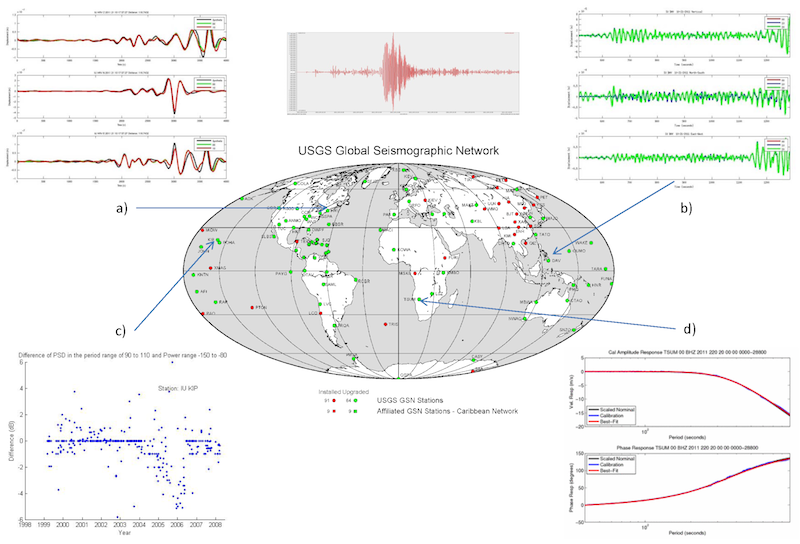2012 IRIS Workshop
Data Quality Control procedures at the USGS Albuquerque Seismological Lab (ASL)
The Staff of the Albuquerque Seismological Lab:
Sampler of the ASL data quality tools, overlain on a map of the stations operated by the USGS: a) comparison of observed and synthetic data for HRV and b) comparison between the broadband sensors and the accelerometer for DAV for the M7.5 Kermadec earthquake (10/21/2011), c) difference between the PSDs for the primary and secondary sensors at KIP from 1998-2008, and d) 2011 calibration results for TSUM.

Full-resolution graphics file in original format: 0083.png
The ASL has recently introduced a number of tools to better quantify and objectively enhance data quality control. These include metadata-driven data handling, analysis of the PQLX power spectral density (PSD) database, rigorous event-based review for earthquakes of M7.0 and higher, routine analysis of calibration data, development of a “Data Quality Analyzer” to facilitate semi-automated assessment of performance, and the initiation of a station review or certification process to investigate historical metadata. These tools are being applied to all the GSN and ANSS stations operated by the ASL.
For further reading: Ringler, A. T., L. S. Gee, B. Marshall, C. R. Hutt, T. Storm (2012). Data quality of seismic records from the Tohoku, Japan, Earthquake as recorded across the Albuquerque Seismological Laboratory Networks, Seis. Res. Lett., 83, no. 3, 543-552.
Keywords: data_quality, gsn, anss
